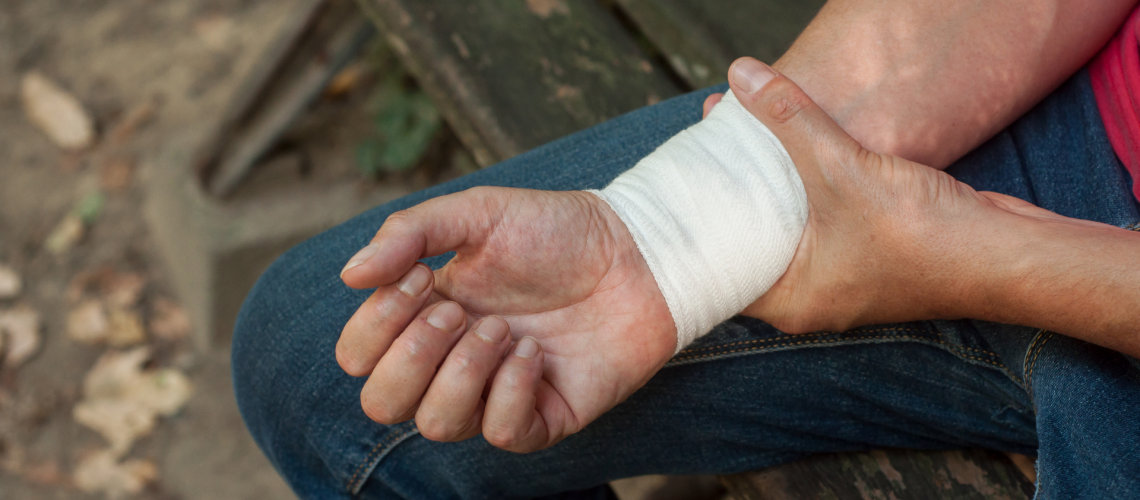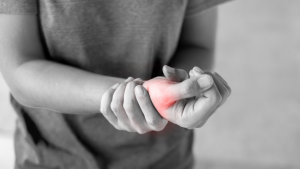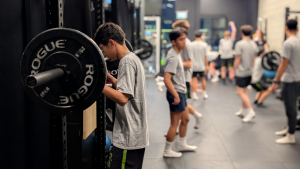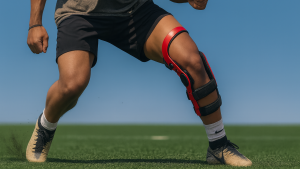Do you have wrist pain when gripping or rotating your hand? It could be a TFCC injury.
The TFCC (or Triangular Fibrocartilage Complex) is a common injury with gym goers (chronic repetitive rotational movement of the wrist), and in sports (falling on an outstretched hand). They can be frustrating injuries because they can affect your ability to train at the gym or participate in your sport. The injury can make daily tasks more difficulty (especially if the injury is in your dominant hand) due to the pain, reduced grip strength and general function of the wrist.
The TFCC consists of ligaments, discs and menisci. The TFCC connects the bones of your forearm (radius and ulna) to the bones of your hand (lunate and triquetrum). The connection between the four bones creates a structure that’s like a trampoline, where the bones are the rim and the TFCC is the suspended trampoline. When the forearm rotates, the radius and ulna move upwards/downwards relatively to each other depending on the direction of the rotation. The purpose of the TFCC is the provide stability at the wrist joint on the pinky side, and also to allow for load to be transmitted. The extensor carpi ulnaris muscle also provides stability to the pinky side of the wrist joint.
What does a TFCC Injury feel like?
- Painful and weak grip
- Clicking sensation with wrist movement
- Pain with rotation at wrist
- Tenderness and swelling at pinky side of wrist joint
What is the recovery for a TFCC Injury?
Depending on the severity of the injury, a TFCC sprain may benefit from a period of immobilization to promote healing. Surgery is also an option in severe cases. In a mild TFCC injury, some kind of protection for the first 2 weeks of injury such as taping or a wrist brace/splint can help protect the injured structure and allow it to heal. As the ligament is healing, it is a good idea to introduce some wrist exercises like wrist circles to decrease stiffness in the wrist joint. It is also important to continue exercising the elbow and shoulder joints as the wrist is healing.
After the the protection phase, a wrist brace is still useful when doing tasks that are demanding to the wrist. At this time, it is important to build strength around the wrist joint to help restore function to the injured wrist. Return to full activity and/or sport can happen around 6-8 weeks. However, ongoing strengthening and rehabilitation for the wrist can continue on for months. If the wrist does not improve and pain and instability is still present, then surgery may be an option.
How can a Physiotherapist / Chiropractor/ Registered Massage Therapist at Lift Clinic help with a TFCC Injury?
Our clinicians at Lift Clinic are able to do an in-depth assessment to determine what may have caused wrist pain. We can also assess the likelihood of a TFCC injury. The assessment can also rule out any serious pathology, and determine the severity of the injury.
If you have been suffering from wrist pain our clinicians at Lift Clinic can help you address the cause, reduce your symptoms, and plan out your recovery. Our clinicians can determine the best type of Physiotherapy, Massage Therapy, or Chiropractic treatment options for your wrist. These include joint mobilization, joint manipulations, soft tissue mobilization, exercises and education about the condition. They can also refer you out to the right specialists to ensure you get the help you need. Our goal at Vancouver Lift Clinic is to help you get back to doing what you need to do.






